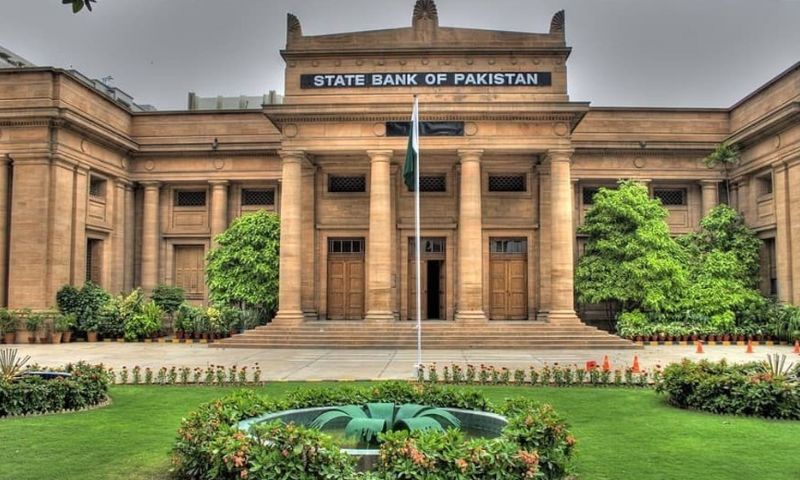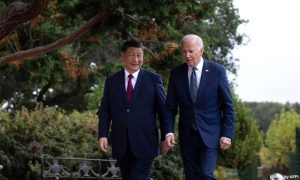ISLAMABAD: Pakistan’s macroeconomic conditions showed improvement during the fiscal year 2023-24, attributed to several factors, including successful engagement with the International Monetary Fund (IMF).
In its Annual Report on the State of Pakistan’s Economy for 2023-24, the State Bank of Pakistan (SBP) stated that, alongside the IMF engagement, stabilization policies, reduced uncertainty, and a favorable global economic environment contributed to the economy’s resilience.
Increased agricultural productivity also played a significant role in achieving better macroeconomic outcomes. The report highlighted a moderate, agriculture-led recovery in real GDP, driven by record wheat and rice harvests and a rebound in cotton production.
Despite the recovery, the current account deficit narrowed to a 13-year low, thanks to strong growth in remittances and exports that more than offset a slight increase in imports. The Stand-By Agreement with the IMF facilitated inflows from other multilateral and bilateral sources, enhancing foreign exchange reserves and stabilizing the forex market.
The report pointed out that the gradual appreciation of the exchange rate, coupled with significant fiscal consolidation, led to a notable decrease in the public debt-to-GDP ratio in FY24.
Monetary Policy and Inflation
The SBP maintained a tight monetary policy throughout FY24, keeping the policy rate unchanged at 22% for most of the year. It also introduced reforms in foreign exchange companies following government actions to stabilize the foreign exchange and commodity markets. The fiscal consolidation efforts resulted in a primary balance surplus for the first time in 17 years.
Declining global commodity prices amid improved economic activity positively impacted key macroeconomic indicators. Inflation fell from a peak of 38% in May 2023 to 12.6% in June 2024, averaging 23.4% during FY24, down from 29.2% in FY23. The consistent decrease in both headline and core inflation in the latter half of FY24 allowed the SBP to reduce the policy rate by 150 basis points to 20.5% in June 2024.
Structural Challenges
Despite these positive developments, the SBP report identified several structural challenges that could hinder sustained macroeconomic stability. Issues such as declining investment, low savings, an unfavorable business environment, lack of research and development, and climate change risks continue to limit growth potential. Additionally, inefficiencies in the energy sector have led to accumulating circular debt.
While the government has begun addressing energy sector challenges through significant price adjustments, broader reforms in policy and regulation are essential. Addressing inefficiencies in State-owned Enterprises (SOEs) is also crucial, as these entities drain fiscal resources in an already constrained tax environment.
Reforming SOEs
The SBP report included a special chapter on “Reforming SOEs in Pakistan,” detailing the country’s historical and current experiences with SOE reforms. It suggested measures for successful reforms based on international best practices, emphasizing the need for effective implementation of corporate governance reforms, a competitive environment, and strong regulatory oversight, supported by broad political consensus.
Economic Outlook
Looking ahead, the SBP report indicated that the improvements in macroeconomic conditions in FY24 are expected to continue into FY25. The approval of the Extended Fund Facility (EFF) program with the IMF in September 2024 is anticipated to strengthen the external account position, enhance the sovereign credit rating, and boost investor confidence.
Moreover, a favorable global economic climate, characterized by falling inflation in advanced economies and steady global growth, is expected to benefit Pakistan. Despite potential risks from rising geopolitical tensions, commodity prices remain low, which is projected to keep the current account deficit within the range of 0%–1% of GDP in FY25.
Inflationary Trends
The report predicts that ongoing fiscal consolidation and the delayed effects of tight monetary policy will further reduce inflationary pressures in FY25. Average inflation is expected to fall below the previously projected range of 11.5%–13.5%. Continued fiscal consolidation, lower borrowing costs, and a gradual recovery in the large-scale manufacturing and services sectors are projected to support real GDP growth in the range of 2.5%–3.5% in FY25.

























